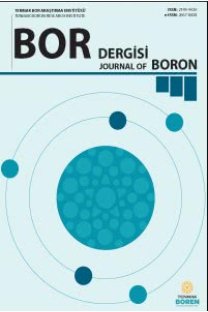Potential for using borate mixtures as groundline preservative pastes
Potential for using borate mixtures as groundline preservative pastes
___
- Smith D. N., Cockcroft R., The remedial treatment of telephone and electric transmission poles, Part 1, Treatment for external decay, Wood, 32, 35-39, 1967.
- Henningsson B., Friis-Hansen H., Kaarik A., Edlund M.-L., Remedial groundline treatment of CCA poles in service. A final report after 60 months testing, Document No. IRG/WP 3534, International Research Group on Wood Preservation, Stockholm, Sweden, 1989.
- Chin C. W., McEvoy C., Greaves H., The development and installation of experimental fungitoxic bandages, International Journal of Wood Preservation, 2 (2), 55- 61, 1984
- Panek E., Blew J. O. Jr., Baechler R. H., Study of groundline treatments applied to five pole species, USDA Forest Service, Forest Products Laboratory Report 2227, Madison, Wisconsin, 1961.
- Morrell J. J., Wood Pole Maintenance Manual, Research Contribution 51, Forest Research Laboratory, Oregon State University, Corvallis, OR, 46 pages, 2012
- Braid G. H., Line M. A., Preliminary evaluation of remedial treatments for soft rot decay of eucalypt pole stubs, Holzforschung, 38, 69-72, 1984.
- Ziobro R. J., McNamara W. S., Triana J. F., Tropical field evaluations of groundline remedial treatments on soft rot attacked CCA-treated eucalyptus poles, 0 37(3), 42-45, 1987.
- DeGroot R. C., Groundline treatment of southern pine posts, USDA Forest Service Research Paper FPL 149, Forest Products Laboratory, Madison, Wisconsin, 1981.
- Chudnoff M., Eslyn W. E., Wawriw R., Effectiveness of groundline treatments of creosoted pine poles under tropical exposure, Forest Prod. J., 28 (4), 28-32, 1981.
- Forsyth P. G., Morrell J. J., Diffusion of copper and boron from a groundline wrap formulation through Douglas-fir heartwood, Forest Prod. J., 42 (11/12), 27- 29, 1992.
- Cockcroft R., Levy J., Bibliography on the use of boron compounds in the preservation of wood, J. Inst. Wood Sci., 6(3), 28-37, 1973.
- Drysdale J. A., Boron Treatments for the Preservation of Wood–A Review of Efficacy Data for Fungi and Termites, Document No. IRG/WP 94-30037, International Research Group on Wood Preservation, Stockholm, Sweden, 1994.
- Freeman M. H., McIntyre C. R., Jackson D., A critical and comprehensive review of boron in wood preservation, Proceedings American Wood Protection Association 105, 279-294, 2009.
- Lloyd J., Borates and Their Biological Applications, Document No. IRG/WP 98-30178, International Research Group on Wood Preservation, IRG Secretariat, Stockholm, Sweden, 1998.
- Findlay W. P. K., The toxicity of borax to wood-rotting fungi, Timber Technology and Machine Woodworking, 61 (2168), 275-276, 1953
- Becker G., Treatment of wood by diffusion of salts, International Research Group on Wood Preservation Document No IRG/WP/368, Stockholm, Sweden, 1976.
- Sogutlu C., Demirci Z., Dongel N., Imirzi H.O., Doruk S., Yalinkilic A. C. The determination of the resistance to burning of some wood types impregnated with sodium borate solution, Wood Res., 56, 233-244, 2011.
- American Wood-Preservers’ Association (AWPA),Standard A 65, Standard method to determine the amount of boron in treated wood using azomethine-H or carminic acid, pp. 334-336 in AWPA Book of Standards, AWPA, Birmingham, AL, 2015.
- Fahlstrom G. B., Threshold values for wood preservatives, Forest Prod. J., 14, 529-530, 1964.
- Freitag C., Morrell J. J., Development of threshold values for boron and fluoride in non-soil contact applications, Forest Prod. J., 55 (4), 97-101, 2005
- Williams L. H., Amburgey T. L., Integrated protection against lyctid beetle infestations: I. Resistance of boron-treated wood to insect and fungal attack, Forest Prod. J., 37 (2), 10-17, 1987.
- Smith D., Williams A., Wood preservation by the boron diffusion process–The effect of moisture content on diffusion time, J. Inst. Wood Sci., 22 (4), 3-10, 1969.
- ISSN: 2149-9020
- Yayın Aralığı: 4
- Başlangıç: 2016
- Yayıncı: TENMAK Bor Araştırma Enstitüsü
Potential for using borate mixtures as groundline preservative pastes
Selim UYSAL, Jed CAPPELLAZZİ, Jeffrey J. MORRELL
Bilge Yaman, Nurcan Çalış Açıkbaş
Yanma Yöntemi İle Lantanit Katkılı Borat Nano Taneciklerin
Tuba ÖZDEMİR, Ali Ünsal KESKİNER
Experimental and DFT calculation studies on boric acid and salicylic acidboric acid-ethanol solution
Tuba ÖZDEMİR ÖGE, Ali Ünsal KESKİNER
Tuba Hatice DOĞAN, Ahmet YARTAŞI
The nanobiocomposites synthesis from biomass and its characterization
